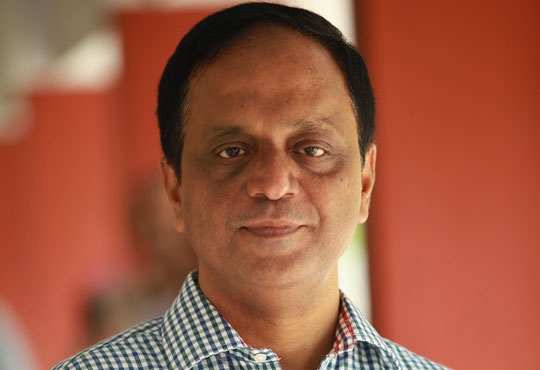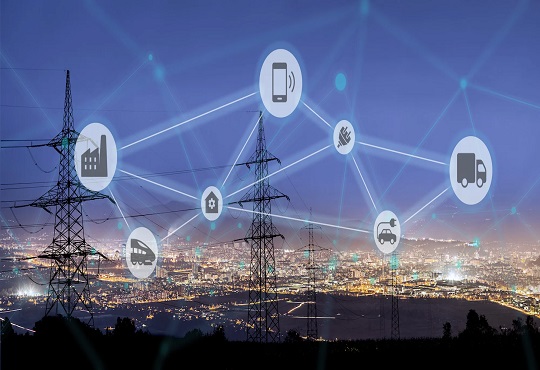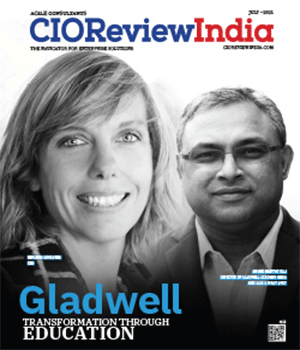
Top 5 Technology Trends Driving the Energy & Utilities Industry
Vishal Pratap Singh | Monday, 08 November 2021, 15:35 IST

In the last few years, most of the leading energy and utilities firms have recognized the need to do things differently. They are focusing constantly on innovation to compete in the energy transition. They are creating new business models to meet customers’ changing needs. Simultaneously, many firms are increasing their focus on the industry’s operational performance, rate of returns and customer engagement practices. Most of these factors are contributing to organisations in the sector closely scrutinizing their deployment of technology while investing in innovative technologies that can ease the job of customer.
The global market size of energy and utilities is projected to reach USD 23.2 billion by 2026, at a CAGR of 4.4 percent from an estimated USD 18.7 billion in 2021. “Indian Energy and Utilities Industry needs to strive to become lean, digital and invest in skills, steep increase in corporate research and development and cutting edge product innovations to be competitive”, says Amitabh Kant, Niti Aayog, CEO.
More Focus on Renewable Transition
As the Energy and Utilities Industry is shifting towards solar, wind and other renewable sources of energy, focusing on new technologies to ease the transition has become a new trend in the market. With the increasing number of smart home devices, energy and utilities are also looking for new opportunities to leverage data to create innovative customer connections. Micro-grids and batteries offer another way for energy and utilities to work more closely with customers. Micro-grids and batteries offer the opportunities to utilities to work directly with the end user, especially by encouraging use during optimal times.
Convergence of Data and Analytics
Industry experts believe that by applying sensors, Artificial Intelligence and Machine Learning to their systems, utilities can be more prepared and resilient. Real time data has the incredible potential to offer for the energy and utility industry ranging from outage reduction and maintenance costs to improving demand response.
By using historical weather patterns to predict the impact on the grid, utilities can have crews and equipment ready to restore power and minimize outages. There are some additional data collection points which include smart meters, IoT device analytics, and implementing cloud based solutions. Also, through this way leaders can see if tools are being implemented in a correct way or not, and if everyone is working from the same data.
Shifting to Digitization
Adopting digital technologies is transforming Energy and Utilities Industry across the value chain. By using decentralized networks of intelligent, agile and self-serving units to ramp up, diagnose and balance the demands. Access of analytical insights is leveraged to improve customer service and relationships which is an area with great scope for improvement for Energy and Utilities companies. Many experts believe that Intelligent Automation using Internet of Things (IoT), Artificial Intelligence (AI) and Robotic Process Automation (RPA) will increase the efficiencies multi-fold for the demand responsiveness and optimization of costs.
Also, going digital allows electricity asset owners and customers to trade and price energy in decentralized markets based on market value. Use of Blockchain technology and smart contracts will bring in transparency and trust in the distribution process.
Blockchain Technology
Industry experts believe that Blockchain is a true disruptor for the energy and utilities industry. The major reason behind it is its decentralized nature that allows for improved visibility, increased operating efficiencies, and the streamlining of regulatory compliance. The use of Blockchain in energy and utilities is also allowing companies to improve their internal processes and enable a more customer centric approach. Through disintermediation and automatic settlement, it is generating significant cost savings for providers, while increasing oversight and governance.
Also, Blockchain technology helps to avoid any double selling of energy credits as duplicate transactions are flagged up as invalid. It helps providers to mitigate fraud, trace and validate REC transactions instantly and automatically.
Smart Meters
Slowly but steadily smart meters are creating its place in the energy and utilities market. Smart meters allow for a more accurate recording of the energy that consumers’ use since power usage is determined at regular intervals throughout the day. This information is then sent back to the utility sector, traditionally via several intermediaries. Through disintermediation the information can be stored on a distributed ledger and automatically accessed by the utility company. Ultimately, this technology helps in saving costs and streamlines efficiencies by removing the need for many changes of hands. It also allows businesses to provide a more customer centric approach through direct interaction with their clients.
The Way Forward
The use of technologies in energy and utilities industry is allowing companies to improve their internal processes and enable a more customer centric approach. Through automatic settlements and disintermediation, significant cost savings for the providers will be generated while increasing oversight and governance. The technologies will be used in energy and utilities industry for efficient energy management, continuity of supply as well as a reliable back up power to safeguard against outages. In the coming future, the technologies are going to play a leading role in reducing transmission losses and deferring expensive network upgrades in energy and utilities sector.
CIO Viewpoint
7 Thoughts on Preparedness for a Slow
By Robin Joy, CIO, V-Guard
Securing your Cloud Infrastructure - A Journey...
By Vishal Katial, VP - Information Technology, Ugam
Achieve Information Security with Converged...
By Deena Dayalan K, Director- IT, Sears India
CXO Insights
Managing Life Cycle - Key for Sustainability
By Jaiganesh Murugesan, Sr. Director, IT for Engineering and Supply Chain, GE Transportation
Futureproof your business with lasting agility
By Subrato Bandhu, Regional VP, OutSystems
Common Pitfalls to Avoid While Managing...








